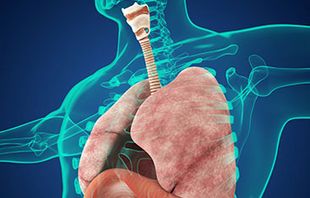Can a human organ be mapped on a single-cell level to learn about the functionality of each individual cell? And can we learn how different these cells are from person to person? DZL researchers at the DZL site Munich (CPC-M) and their collaborators have taken up this challenge and developed the Human Lung Cell Atlas using artificial intelligence (AI)-based techniques. This atlas elucidates the diversity of single lung cell types and allows learning about lung biology in health and disease. It is the first major integrated organ and was built as part of the Human Cell Atlas (HCA) initiative, a worldwide collaborative effort to map the entire body at the level of single cells. The results were now published in Nature Medicine.
Single-cell technologies, developed in the past decade, enable researchers to study tissues at the resolution of individual cells, giving insight into the different functions of cells that make a whole organ do its job. However, generating a single-cell dataset is time-consuming and expensive, and generally, only a few individuals are included in each study. An international team of researchers now created a single-cell atlas of the human lung by combining 49 different published and newly generated datasets. This provided insight into the wide variety of cells and cell types existing in our lungs.
Joining Forces by Joining Datasets
Prof Fabian Theis, Director of the Institute of Computational Biology at Helmholtz Munich and DZL Principal Investigator explains the project: “We have created a first integrated reference atlas of the human lung, which includes data from more than a hundred healthy people and reveals how the cells from individuals vary with age, sex, and smoking history. The sheer numbers of cells and individuals involved now gives us the power to see rare cell types and identify new cell states that have not previously been described.” Dr Malte Lücken, Group leader at the Institute of Computational Biology and the Institute of Lung Health & Immunity at Helmholtz Munich adds: “A comprehensive organ atlas requires many datasets to capture the diversity between both cells and individuals, but combining different datasets is a huge challenge. We developed a benchmarking pipeline to find the optimal method to integrate all datasets into the atlas, using artificial intelligence, and combined knowledge and data from almost 40 previous lung studies.”
While the core of the Human Lung Cell Atlas is data from healthy lungs, the team also took datasets from more than 10 different lung diseases and used machine learning to project these onto the healthy data, in order to understand disease states. It thereby offers a uniquely rich picture of how diseased lungs differ from healthy ones and provides pointers for potential therapeutic targets.
A Central Resource for Understanding Human Lungs in Health and Disease
The researchers made the atlas fully publicly available, and it is expected to serve as a central resource for doctors and scientists that want to better understand lung biology in health and disease and develop further studies. Dr Alexander Misharin, a senior author on the paper and Associate Professor of Medicine at Northwestern University Feinberg School of Medicine, USA, said: “The Human Lung Cell Atlas is a huge resource for the scientific and medical community. Openly available to researchers, new disease data can be mapped onto the HLCA, transforming research into lung biology and disease. As the first whole reference atlas of a major organ, the HLCA also represents a milestone towards achieving a full Human Cell Atlas which will transform our understanding of biology and disease and lay the foundation for a new era of healthcare”.
Altogether, the Human Lung Cell Atlas serves as the first example of how large-scale human cell atlases can progress current and future research on human health and disease.


